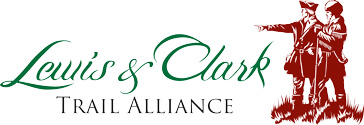Lewis is traveling to the Harpers Ferry armory to obtain arms, ammunition, equipment, and the iron-framed boat.
A Richmond, Virginia newspaper reprints President Jefferson‘s letter to Kentucky governor James Gerrard—a letter explaining his administration’s effort to solve the closure of New Orleans to American merchants via diplomatic means.
The Recorder’s editor, James Callender, relentlessly attacked Jefferson, perhaps because he failed to appoint Callender as Richmond’s postmaster. More likely, Callendar simply was a scandalmonger of the first degree. On 2 September 1802, he published a story revealing Jefferson’s “concubine”—Sally Hemmings, with whom Jefferson lived and had children. Callendar had a violent falling out with the paper’s publisher Henry Pace, and was found dead in a shallow pool along the James River on 17 July 1803.[1]“About the Recorder,” Chronicling America: Historic American Newspapers, chroniclingamerica.loc.gov/lccn/sn84024679/ accessed 26 May 2022.
FRANKFORT, (key.) Feb. 10
By Tuesday’s mail, the governor of this state received the following letter from the president of the U. States:
Washington, January 18, 1803.
I informed you that we had reason to believe that the suspension of the right of deposit at New-Orleans, was an act merely of the intendant, unauthorized by his government . . . . Further information, shewing that this act of the intendant’s was unauthorized, has strengthened our expectation that it will be corrected. [NO ! NO ! NO.]
In order, however, to provide against the hazards which beset our interest and peace in that quarter, I have determined with the approbation of the senate, to send James Monroe, late governor of Virginia, with full powers him and our ministers in France and Spain, to enter with those governments into such arrangements, as may effectually secure our rights and interests in the Mississippi and in the country eastward of that.[2]The Recorder, (Richmond, Va.), 16 March 1803. Chronicling America: Historic American Newspapers, chroniclingamerica.loc.gov/lccn/sn84024679/1803-03-16/ed-1/seq-4/. Lib. of Congress accessed 15 May … Continue reading
Notes
| ↑1 | “About the Recorder,” Chronicling America: Historic American Newspapers, chroniclingamerica.loc.gov/lccn/sn84024679/ accessed 26 May 2022. |
|---|---|
| ↑2 | The Recorder, (Richmond, Va.), 16 March 1803. Chronicling America: Historic American Newspapers, chroniclingamerica.loc.gov/lccn/sn84024679/1803-03-16/ed-1/seq-4/. Lib. of Congress accessed 15 May 2022. |
| ↑3 | For Jefferson’s original letter to James Gerrard, see “Thomas Jefferson to James Garrard, 18 January 1803,” Founders Online, National Archives, founders.archives.gov/documents/Jefferson/01-39-02-0301. [Original source: The Papers of Thomas Jefferson, vol. 39, 13 November 1802–3 March 1803, ed. Barbara B. Oberg. Princeton: Princeton University Press, 2012, pp. 347–348.] |
Experience the Lewis and Clark Trail
The Lewis and Clark Trail Experience—our sister site at lewisandclark.travel—connects the world to people and places on the Lewis and Clark Trail.
Discover More
- The Lewis and Clark Expedition: Day by Day by Gary E. Moulton (University of Nebraska Press, 2018). The story in prose, 14 May 1804–23 September 1806.
- The Lewis and Clark Journals: An American Epic of Discovery (abridged) by Gary E. Moulton (University of Nebraska Press, 2003). Selected journal excerpts, 14 May 1804–23 September 1806.
- The Lewis and Clark Journals. by Gary E. Moulton (University of Nebraska Press, 1983–2001). The complete story in 13 volumes.


